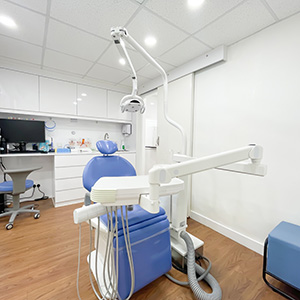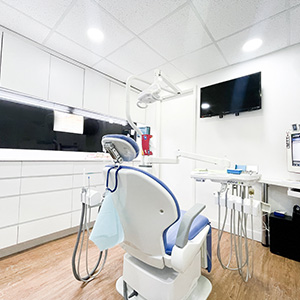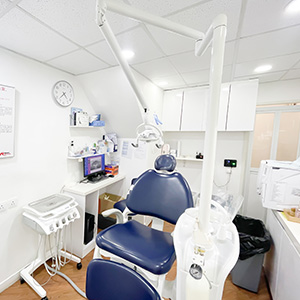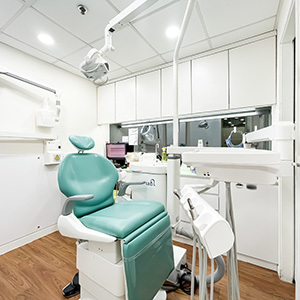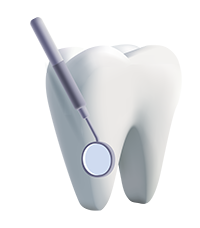
Scaling and Polishing
Gingivitis, periodontal disease, and bad breath could all be avoided by getting your teeth cleaned regularly. The goal of teeth cleaning is to return the teeth to their original clean and smooth condition by removing plaque, tartar, and stains that build up on the tooth’s surface and in between the teeth.
Following a meal, food particles may get stuck to our teeth’s surface or in between them. Even a brush won’t get rid of this plaque easily. Bacterial activities can cause plaque to develop over time and possibly calcify into tartar. Bad breath and periodontal disease are among the consequences that can arise from tartar’s uneven surface, which facilitates bacterial attachment to teeth. Gingivitis and periodontal disease may be avoided by cleaning your teeth using ultrasonic technology, which removes plaque and tartar.

Steps for Scaling and Polishing
- The dentist will completely remove plaque and tartar from your teeth using an ultrasonic cleaning tool.
- The dentist will next polish and smooth the tooth surfaces, maintaining the smoothness of the tooth surface and strengthening the outer layer of the teeth. This lessens the chance of developing periodontal disease and helps stop debris from building up on uneven surfaces.
Tips for Scaling and Polishing Aftercare
- In the days after having your teeth cleaned, you can feel a little uncomfortable and have gum bleeding in your mouth. Patients who have periodontal disease are more likely to have swelling and bleeding. Gum bleeding and soreness will eventually stop and the gums will recover back to normal with proper dental hygiene.
- Inflamed and swollen gums following tooth cleaning may diminish when the irritation goes down. Gum recession can lead to tooth sensitivity, causing discomfort when eating cold, hot, sweet, or sour foods. Desensitising toothpaste can be used as needed to ease the discomfort. It is recommended that you get in touch with our healthcare professionals immediately if the sensitivity continues.
FAQ
- Why Is Regular Dental Cleaning Essential?
- Is Dental Cleaning Necessary?
- What Are The Benefits Of Dental Cleaning?
- Does Dental Cleaning Damage Tooth Enamel?
- During A Dental Cleaning, Why Does The Dentist Use Tools To Scrape My Teeth?
- Can Dental Cleaning Cause Gaps Between Teeth To Widen Or Loosen Teeth?
- Is It Because The Dentist Is Too Forceful When Cleaning My Teeth If There Is Bleeding During Dental Cleaning?
- Can Dental Cleaning Whiten Teeth?
- What Should Be Paid Attention To After Dental Cleaning?
- What Is A Dental Hygienist? What Is The Difference Between Them And A Dentist?
The interdental space is the small area that exists between our teeth and gums when there isn’t a complete seal. Food particles may get stuck in this area after eating, making it challenging to clean even with frequent brushing. This can result in the development of plaque, which sticks to the gums and tooth surfaces. Plaque is progressively hardened into tartar by the metabolic processes of bacteria.
Tartar begins as a thin, white deposit but hardens soon to develop a dark green or brown colour. The formation of tartar makes it more difficult to get rid of the bacteria and plaque that irritates the gums and causes periodontal disease.
Gum recession, bone loss surrounding teeth, tooth loosening, and eventual tooth loss can all be symptoms of severe periodontal disease.
Using dental equipment to remove plaque and tartar from the surfaces of the teeth and the spaces between them, teeth cleaning aims to stop the growth of bacteria and prevent consequences including gum disease, periodontal disease, and bad breath. Along with checking for any more potential dental health problems, the dentist can address them appropriately.
For the maintenance of oral health, dentists advise routine dental cleanings. Although people should generally get their teeth cleaned every six to nine months, the following people are more vulnerable to periodontal disease and should get their teeth cleaned every three to six months:
- Smokers.
- Denture wearers.
- Those who have undergone or are undergoing orthodontic (braces) treatment.
For patients with periodontal disease, dentists will recommend an increased frequency of dental cleanings based on the severity of the disease.
- Removing plaque and tartar adhered to the tooth surface and in between teeth.
- Allowing dentists to diagnose and treat cavities or other dental diseases early.
In general, dental cleaning does not harm the enamel of the teeth. In order to efficiently remove both tartar and plaque during a dental cleaning, dentists use ultrasonic vibrating devices that cause water molecules to vibrate and contact the tartar. This allows the tartar to come off.
In most cases, dentists do not need to use dental instruments to directly scrape off tartar during a routine dental cleaning.
Only in severe cases of periodontal disease where tartar has built up deep below the gum line, and the patient requires periodontal treatment, dentists may use a periodontal scaler to clean the tooth root surfaces and remove tartar under the gums to eliminate periodontal pockets.
Regular dental cleanings are advised to maintain the cleanliness of teeth and gums as the best way to protect your teeth.
Undergoing a dental cleaning treatment does not cause gaps between teeth to widen or teeth to loosen.
Generally, the widening of gaps between teeth and loosening of teeth primarily occur in patients with severe periodontal disease. When a patient has severe periodontal disease, tartar buildup can lead to bacterial infection, causing gum inflammation and gradual recession, affecting the surrounding alveolar bone, eventually leading to loosening of teeth. However, during a dental cleaning treatment, the dentist removes the tartar that fills the gaps between teeth, helping to alleviate gum inflammation symptoms, rather than causing gaps to widen or teeth to loosen.
Additionally, improper use of toothpicks for cleaning or age-related gum and alveolar bone degradation can also contribute to issues with gaps between teeth. It is recommended to use interdental brushes to thoroughly clean the gaps between teeth, prevent tartar buildup, and help maintain oral health.
In conclusion, dental cleaning treatment itself does not cause the widening of gaps between teeth or tooth mobility. Instead, it helps alleviate symptoms of periodontal disease and improve overall oral health.
Gum bleeding should not typically occur from using adequate dental cleaning techniques. Bleeding during dental cleaning is usually a sign of periodontal disease, which causes swelling, inflammation, and irritation in addition to making the gums prone to bleeding.
The primary goal of dental cleaning is to minimise inflammation in the gums by clearing tartar from the spaces between teeth.
Generally speaking, undergoing a dental cleaning does not guarantee teeth whitening results.
Healthy teeth are often slightly yellow in colour, and plaque buildup on the surface of the teeth can make them look even more yellow. In addition, smoking, drinking coffee or tea for an extended period of time, and other habits can cause pigment deposits on the surface of the teeth, which darken the appearance of teeth.
The main purpose of dental cleaning is to thoroughly remove yellowish plaque on the tooth surface and tartar formed. As a result, it’s common for many people to notice that their teeth look somewhat brighter following dental cleaning.
After dental cleaning, you may experience tooth sensitivity, which typically subsides gradually within two to three days.
For patients with periodontal disease, gum swelling may gradually decrease after dental cleaning, leading to increased tooth sensitivity. Patients may experience discomfort when eating cold, hot, sweet, or acidic foods. In such cases, patients can consider using desensitizing toothpaste to alleviate discomfort.
Patients with periodontal disease may experience mild gum bleeding after dental cleaning. Continuing to maintain oral hygiene will gradually improve oral discomfort and gum bleeding, leading to the restoration of gum health.
A dentist, on the other hand, is a healthcare professional trained in dental medicine with the ability to diagnose oral diseases and provide oral treatments. Dentists can perform more complex oral surgeries, such as implant treatments, and other treatments, such as root canal treatments, including teeth cleaning treatment.
A dental hygienist is a licensed professional dental care provider recognized internationally. Under the guidance of a dentist, dental hygienists perform tasks such as teeth cleaning, removal of tartar, tooth polishing, taking X-rays, applying fluoride for cavity prevention, and providing oral health education tailored to individual patients to achieve the long-term goal of prevention over treatment.
In summary, dental hygienists focus on teeth cleaning, educating patients on oral hygiene and preventive care, while dental cleaning by a dentist refers to the teeth cleaning procedure performed by a dentist, who can also provide more complex oral treatments when needed.




